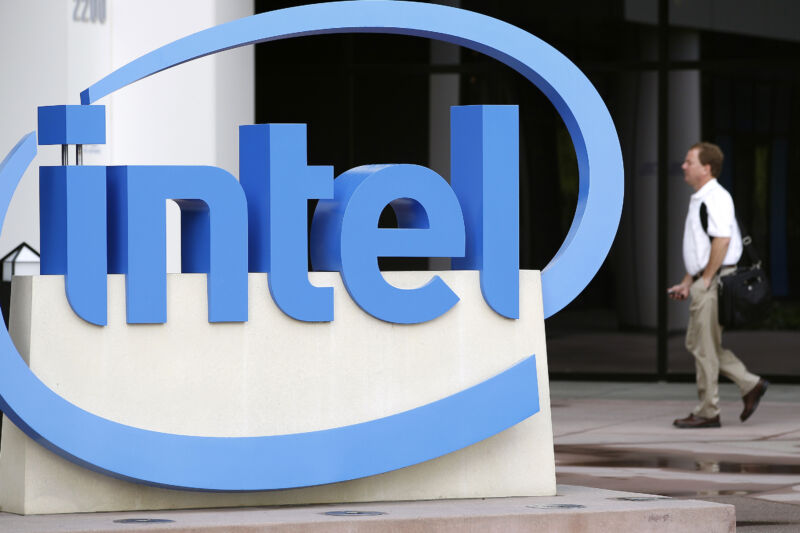Intel announced Monday that it has been awarded a contract for foundry services through a Department of Defense program intended to support leading-edge semiconductor manufacturing in the US.
Though Intel’s share of the estimated $100 million award wasn’t disclosed, it is certain to boost Intel’s fledgling Foundry Services division that was announced in March as a part of the company’s IDM 2.0 strategy. The company will be working alongside IBM and electronic design automation companies Cadence and Synopsys. The program, known as “Rapid Assured Microelectronics Prototypes—Commercial or RAMP-C,” seeks to expand the Pentagon’s access to trusted, secure, and reliable chips from sub-7 nm process technology.
“One of the most profound lessons of the past year is the strategic importance of semiconductors and the value to the United States of having a strong domestic semiconductor industry,” Intel CEO Pat Gelsinger said. “When we launched Intel Foundry Services earlier this year, we were excited to have the opportunity to make our capabilities available to a wider range of partners, including in the US government, and it is great to see that potential being fulfilled through programs like RAMP-C.”
The EUV hurdle
So far, only a handful of companies have successfully incorporated the technologies needed to etch ever-smaller features into silicon, and TSMC’s mastery of extreme ultraviolet lithography (EUV) has helped to catapult it to the front of the pack. The Taiwanese company and South Korea-based Samsung are the only two semiconductor firms currently using EUV to produce logic chips at a commercial scale, and TSMC dominates at the leading edge, making more than 80 percent of the world’s 5 nm chips.
Intel has struggled to keep pace with its Asian rivals. It has yet to introduce EUV into the manufacturing of any of its commercial products, and it won’t be widely adopting the technology until the second half of 2023. Meanwhile, TSMC announced last year that it owned 50 percent of all installed EUV machines and had made 60 percent of all wafers produced using the technology, giving the company a significant head start. That sort of manufacturing lead also confers certain advantages for future process development—progress toward the next node frequently depends on solving problems that appear at the current one.
Though Intel isn’t expected to introduce a rival to TSMC’s 7 nm node—which was introduced in 2018—until early next year, the company expects by 2024 to begin ramping up production of its “20A” process, which should be largely equivalent to TSMC’s 2 nm node that is anticipated to be in full production by then.
Dearth of domestic manufacturers
As TSMC has steamed ahead, the Pentagon has been left with no domestic semiconductor manufacturer at the leading edge. IBM sold its microelectronics division to GlobalFoundries in 2014, and since then, GlobalFoundries has abandoned the forefront for more mature nodes. Intel remains the only contender, and the Pentagon clearly hopes that this award will help keep it in play.
“The United States currently has no onshore access to foundry technology capable of meeting the Department of Defense’s (DoD) long-term leading-edge microelectronics manufacturing needs,” the program’s request for solutions said.
When complete, the RAMP-C program expects to award a total of $320 million. Though significant, it’s a small portion of what’s needed for semiconductor companies to stay at the leading edge. Intel has announced that it will spend $20 billion on two fabs in Arizona alone, and TSMC has said it will spend $100 billion over the next three years to add capacity.

